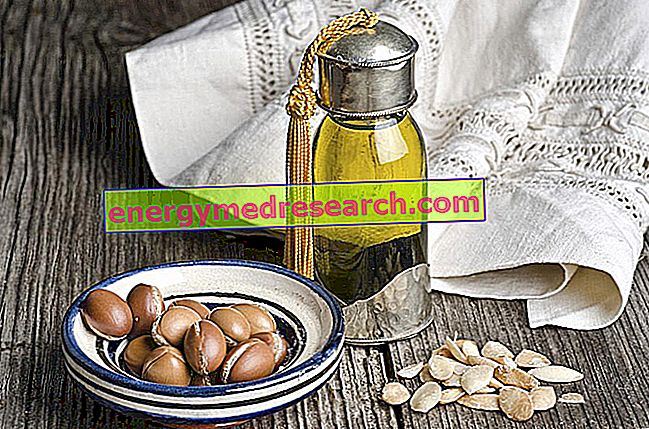
Argan oil is a vegetable oil produced from the seeds of the argan tree ( Argania spinosa L.), an endemic plant of Morocco.
The fruit of the argan tree is small, round, oval or conical. Externally it is covered by a fairly thick skin (exocarp) which covers the fleshy pulp (mesocarp). In turn, the latter wraps an endocarp containing from one to three seeds (structured by tegument, endosperm and embryo). The endocarp and the seeds represent about 25% of the total weight and together they are commonly called "hazel".
Argan oil is extracted from the core with a yield ranging from 30% to 50%, depending on the extraction method. Lipid extraction is therefore the key to the argan oil production process.
To remove the pits, the fruits are first left to dry in the open air, then fleshed off manually; on the contrary, certain producers remove the exocarp and the mesocarp mechanically, without drying the fruit. Generally, the Moroccan population uses waste to feed the cattle.
The next phase consists of breaking the argan stones in order to obtain the seeds from which to squeeze the oil. In this process, every attempt to mechanize has failed and is therefore still done manually. In the Berber population, this task is fulfilled by women.
The seeds for food are then gently roasted, ground and squeezed. What comes out of it is a brown pulp later placed in special vases; the surplus is also left to feed cattle.
NB . Argan oil for cosmetics has an almost identical process, but the stones are not toasted to prevent the product from acquiring an excessive smell of hazelnut.
The decanted brown pulp is then left to rest for about two weeks, so that the particles suspended in the liquid decant on the bottom, creating a natural sediment and clarifying the oil. This is further filtered, depending on the necessary purity.
However, "pure" argan oil may contain some sediments. This is a natural component of the production process that cannot be eliminated; fortunately it does not affect the quality of the oil.
Argan oil has a relative density (at 20 ° C) of about 0.906-0.919. Contains tocopherols (vitamin E), phenols, carotenes, squalene and fatty acids (unsaturated 80%). The main phenolic components are caffeic acid, oleuropein, vanillic acid, tyrosol, catechol, resorcinol, epicatechin and catechin.
Depending on the extraction method, argan oil can also be more resistant to oxidation than olive oil.



